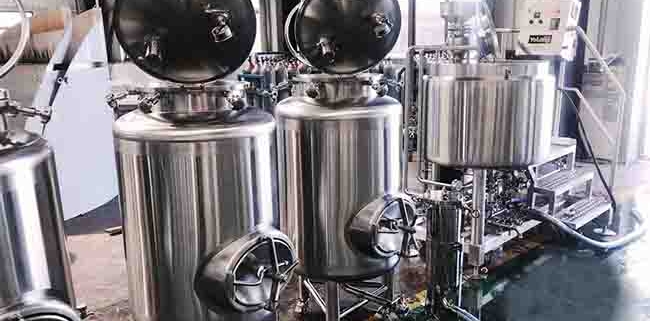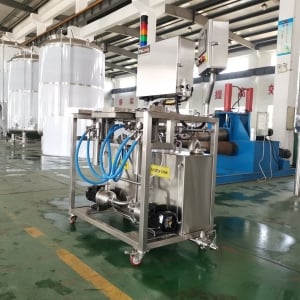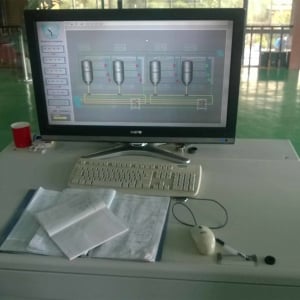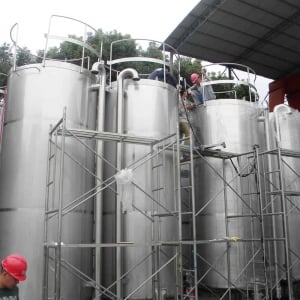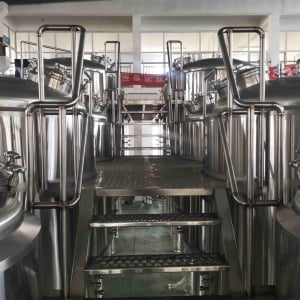1 BBL Brite Tank
A 1 BBL (Barrel) brite tank is a critical piece of brewing equipment used for storage and clarification of beer after fermentation. This guide provides a comprehensive overview of 1 BBL brite tanks including types, design considerations, sizing, installation, suppliers, prices, and FAQs.
Overview of 1 BBL Brite Tank
Brite tanks, also known as bright beer tanks or serving tanks, are stainless steel vessels used for storing, clarifying, carbonating, and serving beer. They are an essential component of any microbrewery or taproom looking to craft and serve high volumes of fresh beer.
This guide focuses specifically on 1 barrel (BBL) brite tanks, which can hold 31 gallons or approximately 124 liters of beer. Key details include:
- Role in brewing process – clarify, store, carbonate, serve beer
- Typical capacity – 1 BBL (barrel), equal to 31 gallons or 124 liters
- Construction – stainless steel
- Shape – cylindrical with conical bottom
- Features – cooling jackets, clean-in-place (CIP) spray balls, racking arm, sight glass, pressure rating
- Used by – microbreweries, taprooms, taphouses
Continue reading for a full breakdown of 1BBL brite tank selections, specifications, installation considerations, operational procedures, maintenance, and FAQs. Whether you are looking to upgrade your existing small batch brewing system or building a brewpub from the ground up, this guide will equip you to make informed equipment decisions.
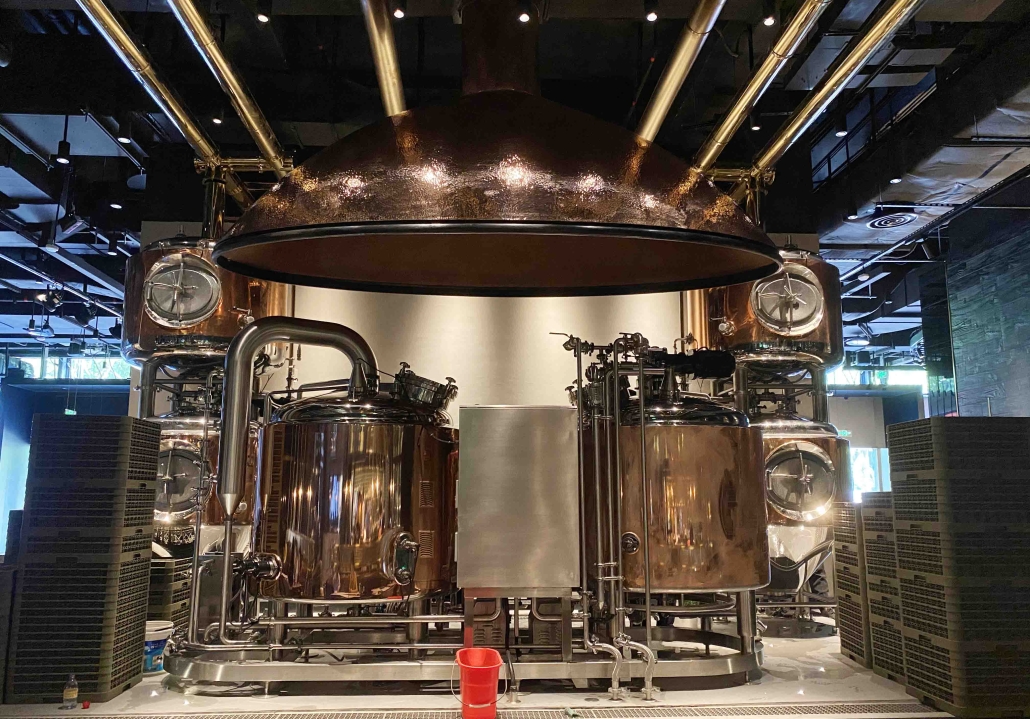
Types of 1 BBL Brite Tanks
There are a few key varieties of 1 BBL brite tanks to consider:
Table 1: Types of 1 BBL Brite Tanks
| Type | Description |
|---|---|
| Cylindrical | Traditional cylindrical shape with flat or sloped bottom |
| Conical | Cylindrical top with angled/conical bottom ending in valve |
| Stacked | Two or more cylinders stacked vertically |
| Mobile | Mounted on casters for portability |
| Direct draw | Built-in faucets for direct serving |
The choice depends largely on the available space and serving style of your brewery:
- Conical bottom tanks allow more compact sediment collection but take up more vertical space.
- Stacked tanks maximize storage capacity if you have the headroom.
- Mobile brite tanks provide flexibility for small spaces.
- Direct draw tanks enable pour-a-draft functionality.
Many manufacturers offer modular, customizable 1 BBL brite tanks so you can tailor them to your needs in terms of shape, height, width, accessories, and functionality.
1 BBL Brite Tank Design Considerations
Properly designing your brite tank system requires some upfront planning. Key factors to consider include:
Table 2: 1 BBL Brite Tank Design Factors
| Consideration | Details |
|---|---|
| Volume | Standard 1 BBL = 31 gallons, but confirm capacity |
| Dimensions | Measure space constraints – height, width limitations |
| Shape | Cylindrical, conical bottom, stacked, mobile |
| Construction | Stainless steel grade and finish |
| Cooling method | Glycol, refrigeration, jackets |
| Accessories | Site glass, sample valve, racking arm, CIP, casters |
| Customization | Modular tanks allow customization |
| Serving style | Direct draw faucets or remote taps |
| Budget | Balance performance and cost |
Thinking through these elements upfront ensures your tanks properly integrate into your overall brewery design and workflow. Work closely with equipment suppliers to spec a tank customized for your needs and constraints.
Typical 1 BBL Brite Tank Specifications
While 1 BBL brite tanks vary across manufacturers, some typical specifications include:
Table 3: Key 1 BBL Brite Tank Specifications
| Parameter | Details |
|---|---|
| Volume | 31 gallons or 1 barrel (BBL) |
| Height | 48-84 inches for single cylinder |
| Diameter | 24-36 inches |
| Thickness | Up to 1/4 inch for cylinder |
| Material | 304 or 316 stainless steel |
| Finish | Interior polish, exterior brushed or mirror |
| Pressure rating | 60-120 psi design pressure |
| Cooling method | Glycol, refrigeration, cooling jackets |
| Valves | Sample valve, racking arm, bottom dump valve |
| Nozzles | CIP sprayball, carb stone, PRV, sight glass |
| Agitator | Top or bottom mounted |
| Weight | 130-500 lb empty depending on construction |
Again, modular brite tank systems allow customization of most parameters including capacity, dimensions, features, and accessories. Work with an experienced fabricator to spec tanks matching your operational requirements.
1 BBL Brite Tank Sizing
Properly sizing your brite tank system is critical – too big wastes money and space, too small limits production. Use the following best practices:
- Determine beer production volumes – 1 BBL holds 31 gallons. Estimate your annual or monthly volumes. Allow room for growth.
- Calculate total tank volume needed – Multiply production volume by average beer age (residence time) to determine holding capacity needed. Example: 5 BBL/week production x 3 week average age = 15 BBL total capacity needed.
- Choose number and size of tanks – Given space constraints, select appropriate number and size of 1 BBL tanks. Example: With 450 BBL annual production, install six 1 BBL brite tanks allowing 2 month beer storage capacity.
- Consider peak usage – Account for periods like holidays that drive higher production volumes. Add overflow capacity.
- Leave room to grow – Adding tanks down the road is easier if you design in space for expansion.
Consult an experienced brewery equipment supplier to right-size your tank farm capacity. They can spec an modular, scalable brite tank system meeting current and future brewery needs.
1 BBL Brite Tank Suppliers and Pricing
Many commercial brewing equipment manufacturers offer 1 BBL brite tanks with prices varying based on features and customization. Expect to invest $2,000 to $10,000+ per tank.
Table 4: 1 BBL Brite Tank Manufacturers and Price Ranges
| Supplier | Description | Price Range |
|---|---|---|
| JV Northwest | Stainless steel tanks, made in USA | $3,000-$8,000 |
| Ss Brewtech | Modular glycol, refrigerated or direct draw | $4,000-$9,500 |
| Premier Stainless | Custom fabricated brew systems | $5,000-$15,000 |
| Specific Mechanical | Jacketed conical and cylindrical | $3,500-$8,000 |
| Psycho Brew | Custom direct draw brite tanks | $6,000-$12,000 |
| AAA Metal Fabrication | Custom brewery equipment | Get Quote |
Pricing for each 1 BBL brite tank varies based on:
- Dimensions and capacity
- Materials and construction
- Features and accessories
- Conical vs cylindrical design
- Cooling and insulation
- Freight, delivery, installation costs
To find the best value equipment matching your exact brewery specifications, get quotes from multiple vendors. Focus both on upfront capital costs and ongoing operation/maintenance expenses over the equipment lifetime.
Installing 1 BBL Brite Tank
Properly installing brite tank systems ensures safe, efficient ongoing operations. Work with equipment suppliers and contractors to:
Table 5: 1 BBL Brite Tank Installation
| Task | Details |
|---|---|
| Site preparation | Level concrete floor, layout, prep connections |
| Rigging | Coordinate crane/rigging to place tanks without damage |
| Mounting | Bolt down cylinders, anchor conical base |
| Connect cooling | Install glycol/refrigeration lines & sensors |
| Plumb tanks | Connect CO2, beer, water, drain lines |
| Add hardware | Install valves, racks, ladders, guard rails |
| Test | Pressure test for leaks, verify connections |
| Clean & passivate | Remove construction dust, passivate internals |
Installing multiple stacked brite tanks or those integrated into a brew deck may require structural modifications. Work with structural engineers ensure floor and designs meet seismic, load distribution, and building code requirements.
Operating 1 BBL Brite Tank
Once installed, properly operating your brite beer tanks improves quality and consistency:
Table 6: 1 BBL Brite Tank Operation Guide
| Phase | Procedure |
|---|---|
| Fill | Pump cooled beer via racking arm to bottom of tank |
| Chill | Set glycol/refrigeration to 34-38°F, allow beer to clarity and chill – 1-3 weeks |
| Carbonate | Use carb stone to add CO2, carbonating to 2.5-3 volumes |
| Store | Hold bright beer chilled until serving |
| Serve | Connect beer and gas lines to faucet/taps |
Key operation tips:
- Minimize oxygen exposure
- Maintain chill temperature
- Adjust carbonation levels
- Allow particles to settle
- Check clarity through sight glass
- Ensure proper line balancing to faucets
Follow detailed standard operating procedures from your equipment manuals for each operational phase. Maintain records for process consistency batch to batch.
Maintaining 1 BBL Brite Tank
Proper cleaning and preventative maintenance ensures maximum 1 BBL brite tank efficiency and lifespan. Key tasks include:
Table 7: 1 BBL Brite Tank Maintenance
| Task | Frequency | Details |
|---|---|---|
| Inspect sight glass & sample | Daily | Check for clarity issues |
| Clean brite tank | After each batch | Hot caustic soak, pressure wash to remove organic deposits |
| Inspect mechanicals | Monthly | Check/tighten fasteners, supports, gaskets |
| Lubricate valves | Monthly | Use food grade grease on o-rings, seals |
| CIP spray balls | Quarterly | Verify spinning freely, no clogs |
| Inspect glycol lines | Annually | Pressure test lines for wear/leaks |
| Passivate tanks | Annually | Citric acid wash removes scaling, maintains finish |
| Verify pressure rating | Every 5 years | Confirm system rating PSI |
Keep maintenance logs detailing tank performance over time. Watch for trends indicating potential problems – inconsistent beer clarity, chilling times, or quality could signify maintenance issues. Schedule annual preventative maintenance and tank passivation during brewery slow seasons.
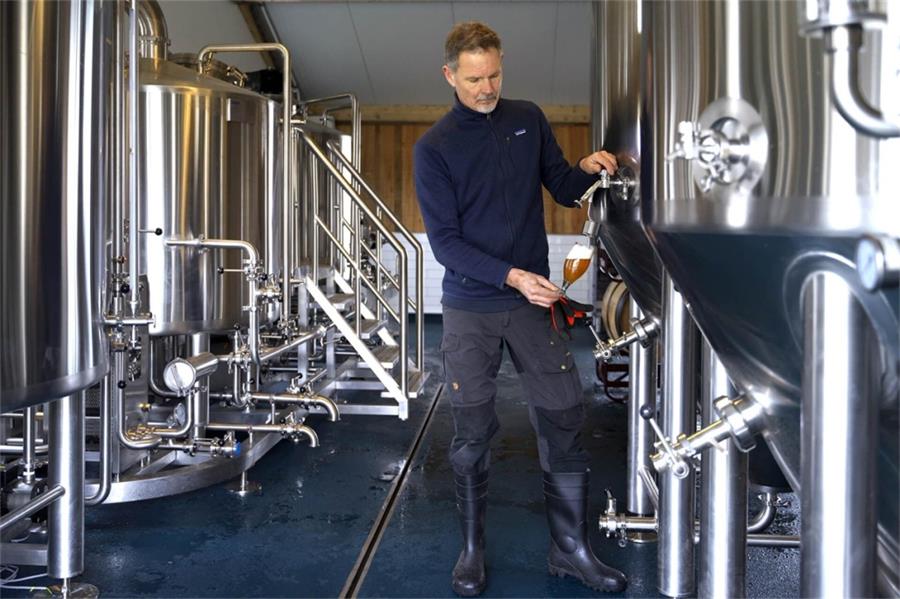
FAQs
| Question | Answer |
|---|---|
| Do I need a brite tank? | Brite tanks help clarify, store, carbonate, and serve finished beer. They allow extended aging without losing taps to fermenters. |
| What size brite tank should I get? | 1 BBL tanks hold 31 gallons, suitable for many microbreweries and taprooms. Right size your system based on production volumes and serving needs. |
| How are brite tanks cooled? | Glycol, refrigeration lines, cooling jackets, etc maintain serving temperature of 34-38°F. |
| What are the parts of a brite tank? | Key components include sight glass, racking arm, dump valve, sample port, caster wheels, cleaning ports, carb stones, and cooling lines. |
| Can you stack brite tanks? | Yes, some systems allow vertically stacking tanks to multiply capacity without expanding footprint. Requires sufficient structural support. |
| Where should brite tanks go in a brewery? | Locate brite tanks close to the taproom/serving area for easy access. they require floor drains for cleaning. |
| How much do 1 BBL brite tanks cost? | $2,000 – $10,000+ per tank depending on size, material, features. Get quotes from multiple vendors. |
| Can I rent brite tanks? | Some beverage equipment companies offer brite tank rental options at monthly rates rather than purchasing. Useful for pilot systems or peak seasons. |

